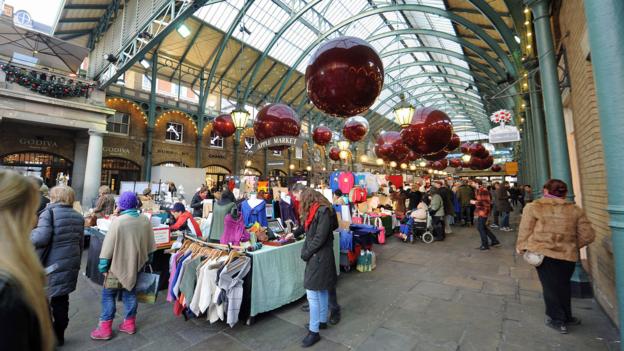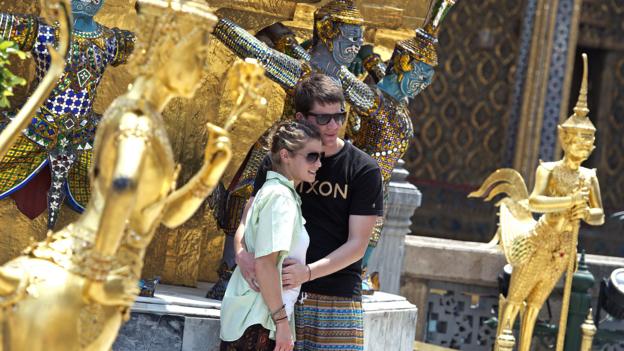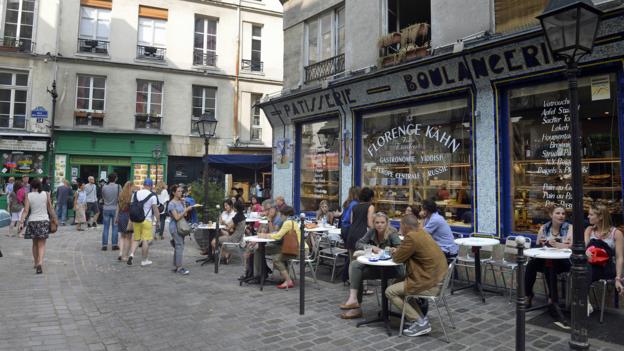Editor’s note: The list below reflects the top five cities on MasterCard’s Global Destination Cities Index for 2014. The2015 list remains largely unchanged.
But being a resident of one of the world’s most visited cities is not without its unique set of challenges. “Coming from a smaller city in Canada, I was overwhelmed at first by how crowded certain areas of Paris were,” said Erika Belavy, who moved to the City of Light from Calgary, Alberta, seven years ago. “When I first moved to the city, I made the mistake of choosing an apartment right beside the Arc de Triomphe. No matter what time of day, or which month of the year, there were so many tourists it was a nightmare getting on the nearby metro.”
Still, it does not take residents long to learn how to navigate the crowds and find secluded spots. We talked to expats and natives to learn what it’s like living in some of the world’s most visited cities – and the secrets to steering clear of the constant crowds.
London
Great Britain’s capital came in as this year’s number one most visited city, with 18.7 million international tourists estimated to arrive in 2014. (Mastercard combines tourism board statistics, flight schedules and expected passenger loads to project the year’s arrivals.) London native Sophie Loveday said she hardly notices the influx. “You just get used to so many people being around,” she said. “It's what gives the city such a buzz!” |
| Many of London's visitors find themselves at some point here, at the city's iconic Trafalgar Square. (Amanda Ruggeri) |
 |
| Shopping in Covent Garden, shown here decorated for Christmas, can be crowded -- but rewarding. (Stuart C Wilson/Getty) |
There are no shortages of neighbourhoods (called districts) to fit any vibe. Loveday lives in the southwest district of Tooting, which she loves for its multicultural vibe and influx of young professionals who keep the area lively. She also recommended Angel, in northern London, due to its “cool and friendly” vibe.
Bangkok
Due to political protests and the Thai government shutdown in 2013, Bangkok slipped to number two in this year’s global rankings, yet is still expected to draw 16.4 million international visitors in 2014. Thankfully, residents say, the influx is seasonal, with most visitors coming November to February. Ketsara Chocksmai, a Bangkok native and tour director for Thailand’s smarTours, said she especially finds the city pleasant from June to September. “It’s our rainy season, so not many tourists come to visit this time of year,” she said. But since it usually does not rain all day, locals can still enjoy being outside. |
| Tourists pose with sculptures at Bangkok's Grand Palace. (Pornchai Kittiwongsakul/AFP/Getty) |
Despite its reputation for wild nightlife, Bangkok also has its fair share of quiet spaces for people to get away. Locals often seek peacefulness in one of the city’s many Buddhist temples, such as the old town’s Wat Phra Kaew, considered the most sacred in the country due to its 6.6m-tall “Emerald Buddha”, carved from a single piece of jade. Lumpini Park and Benjakitti Park, downtown, can also be peaceful escapes – aside from early morning and late afternoon, when they tend to be popular with joggers and yogis.
Paris
The French capital is expected to attract 15.6 million of visitors in 2014, many of whom are drawn to its iconic landmarks, including the Eiffel Tower, Notre Dame and the Louvre. But those same icons are exactly the areas that locals generally avoid. “There is no amount of money you can pay me to go to the Champs Élysées in the middle of August,” said Christina Tubb, vice president of a French technology firm who moved from the US in 2009. |
| Visitors wait outside the Louvre's main entrance on a summer day. (Miguel Medina/AFP/Getty) |
Still, when she does visit the tourist destinations, she knows the local secrets – like getting a friend’s season pass to hop the line at the Musee d’Orsay or using the “secret entrance” at the Louvre (at Porte des Lions). “I'll still bite the bullet and do a lot of touristy things because it's half the reason I live here,” she said.
While crowded in the summer months, the Latin Quarter also has its fair share of restaurant refuges if you know where to go. “There are certain streets that can be very touristy, but right around the corner there will be a restaurant or café that is considered an institution of the neighbourhood and hasn’t changed its menu since the ‘20s,” said Belavy. Both Tubb and Belavy also frequent the Marais for its specialty shops, where, Belavy said, “the charm outweighs the stress of the crowds.
 |
| Visitors and locals relax outside a cafe in Paris' Marais. (Miguel Medina/AFP/Getty) |
”Despite its size, each of Paris’ 20 arrondissements (municipal districts) have a neighbourhood feel. Once run-down, the 10th arrondissement in the city's northeast is now undergoing a revival, attracting a young crowd with its hip bars, art galleries and tree-lined Canal St Martin; the 3rd and 9th also attract bohemian residents. Those looking for something quieter can explore the 15th, a residential area just south of the Seine which is home to upper middle-class families, or the 16th or 5th, which are known for having particularly good schools.